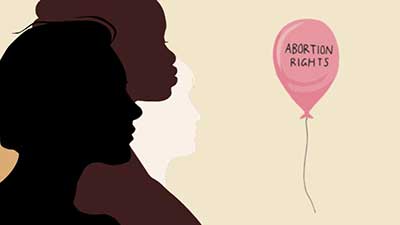Relevance: GS-2: Government Policies and Interventions for Development in various sectors and issues arising out of their Design and Implementation.
Key Phrases: woman’s choice matters, Medical Termination of Pregnancy Rules 2021, Mental health and choice, Woman’s right to make reproductive choices, medical boards, social stigma.
Why in News?
- Recently, the Supreme Court allowed an unmarried woman to abort a 23-week pregnancy, subject to the report by a medical board at AIIMS.
- Earlier, the Delhi High Court had refused to let the woman undergo abortion on the grounds that the Medical Termination of Pregnancy Rules 2021, do not extend the 24-week limit to unmarried women.
What is India’s law on abortion?
- Section 312 of the Indian Penal Code, 1860, criminalizes voluntarily “causing miscarriage” even when the miscarriage is with the pregnant woman’s consent, except when the miscarriage is caused to save the woman’s life.
- This means that the woman herself, or anyone else including a medical practitioner, could be prosecuted for an abortion.
- Medical Termination of Pregnancy (MTP) Amendment Act, 2021:
- In 2021, Parliament amended the MTP Act 1971 and allowed for termination under the opinion of one doctor for pregnancies up to 20 weeks.
- For pregnancies between 20 and 24 weeks, the amended law requires the opinion of two doctors.
- For the second category, the Rules specified seven categories of women who would be eligible for seeking termination.
- Section 3B of Rules prescribed under the MTP Act reads: “The
following categories of women shall be considered eligible for
termination of pregnancy under clause (b) of subsection (2) Section 3 of
the Act, for a period of up to twenty-four weeks, namely:
- survivors of sexual assault or rape or incest;
- minors;
- change of marital status during the ongoing pregnancy (widowhood and divorce);
- women with physical disabilities [major disability as per criteria laid down under the Rights of Persons with Disabilities Act, 2016
- mentally ill women including mental retardation;
- the foetal malformation that has a substantial risk of being incompatible with life or if the child is born it may suffer from such physical or mental abnormalities to be seriously handicapped; and
- women with pregnancy in humanitarian settings or disaster or emergency situations as may be declared by the Government.”
Mental health and choice:
- The amendment is perhaps meant to be supportive of women, but it hardly does so.
- On the contrary, it is a half-hearted move towards greater abortion rights and a feeble attempt to codify the already-existing practice being followed by various high courts.
- Even before the amendment and the new rules, the courts and particularly the Bombay High Court had led the jurisprudence on this issue.
- On several occasions, it upheld abortion to be an integral part of a woman’s personal liberty on various grounds. The most important of them remain — mental health and choice.
- The amendment fails to include much of the judicial progress made in this aspect
- When it comes to mental health and choice as grounds for abortion, there is very little that even the medical boards have to offer. Medical boards were never part of the law.
- They were introduced by the Supreme Court in a case in 2016. Since then, in the absence of any update in the law, high courts relied on the opinion of the medical boards to allow or refuse permission for abortion in any case beyond 20 weeks of pregnancy.
- With the awareness and judicial progress, medical boards were met with questions of choice and mental health and in more than one instance, they refused to recommend abortion, yet high courts have upheld it as a matter of right.
- It was only in 2009 that the Supreme Court held that a woman’s right to make reproductive choices is also a dimension of personal liberty.
Conclusion:
- Abortion remains a social stigma, medical boards are codified for pregnancies after 24 weeks and the marital status of the woman remains a factor.
- There is limited awareness and implementation of the Act particularly in rural areas and the language of the law is still provider-centric.
- Additionally, women still have to undergo the judicial process in much-delayed pregnancies and courts sometimes take a regressive view of abortion rights.
- What the courts must do, however, is become torch bearers of abortion rights whenever they are called upon to do so.
- We have travelled a long way from access to safe abortion in cases of delayed pregnancy only to save the life of the woman to today when mental health and choice are contributing factors to the process but all is not yet well.
Source: Indian Express
Mains Question:
Q. How far do you agree that despite limitations of the MTP Act the courts have upheld choice and mental health as important factors in a woman’s decision to terminate pregnancy. Explain.








